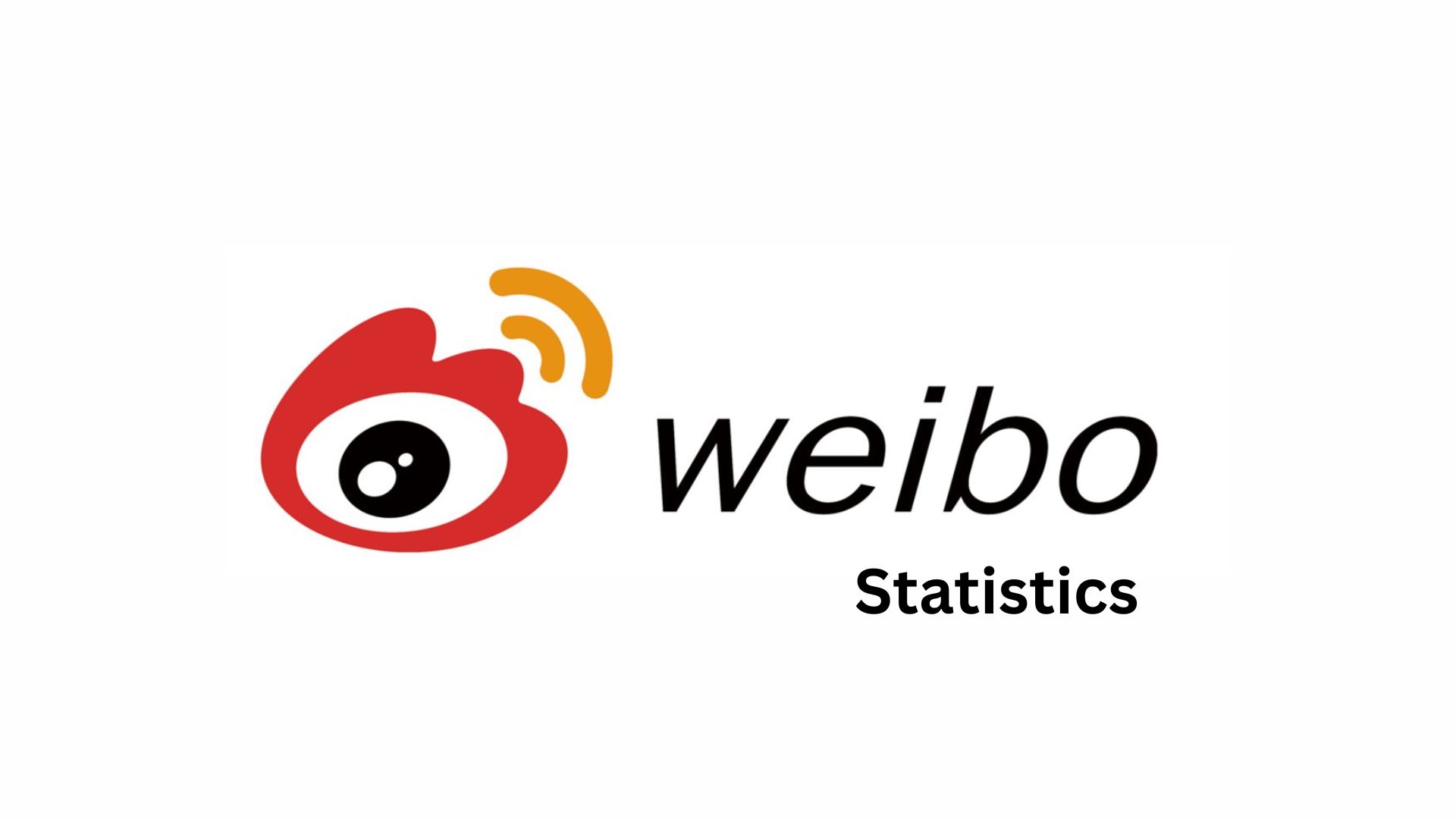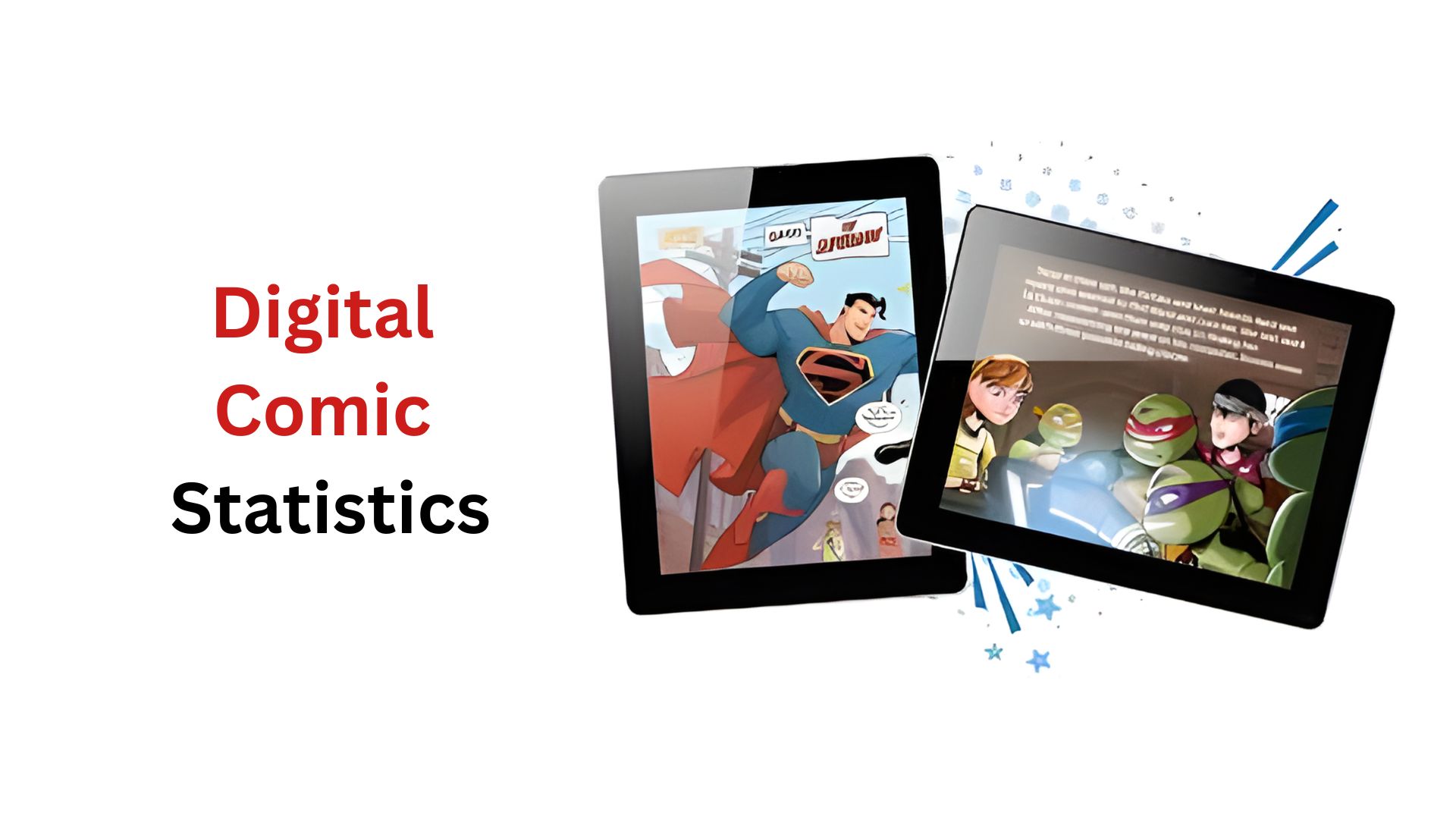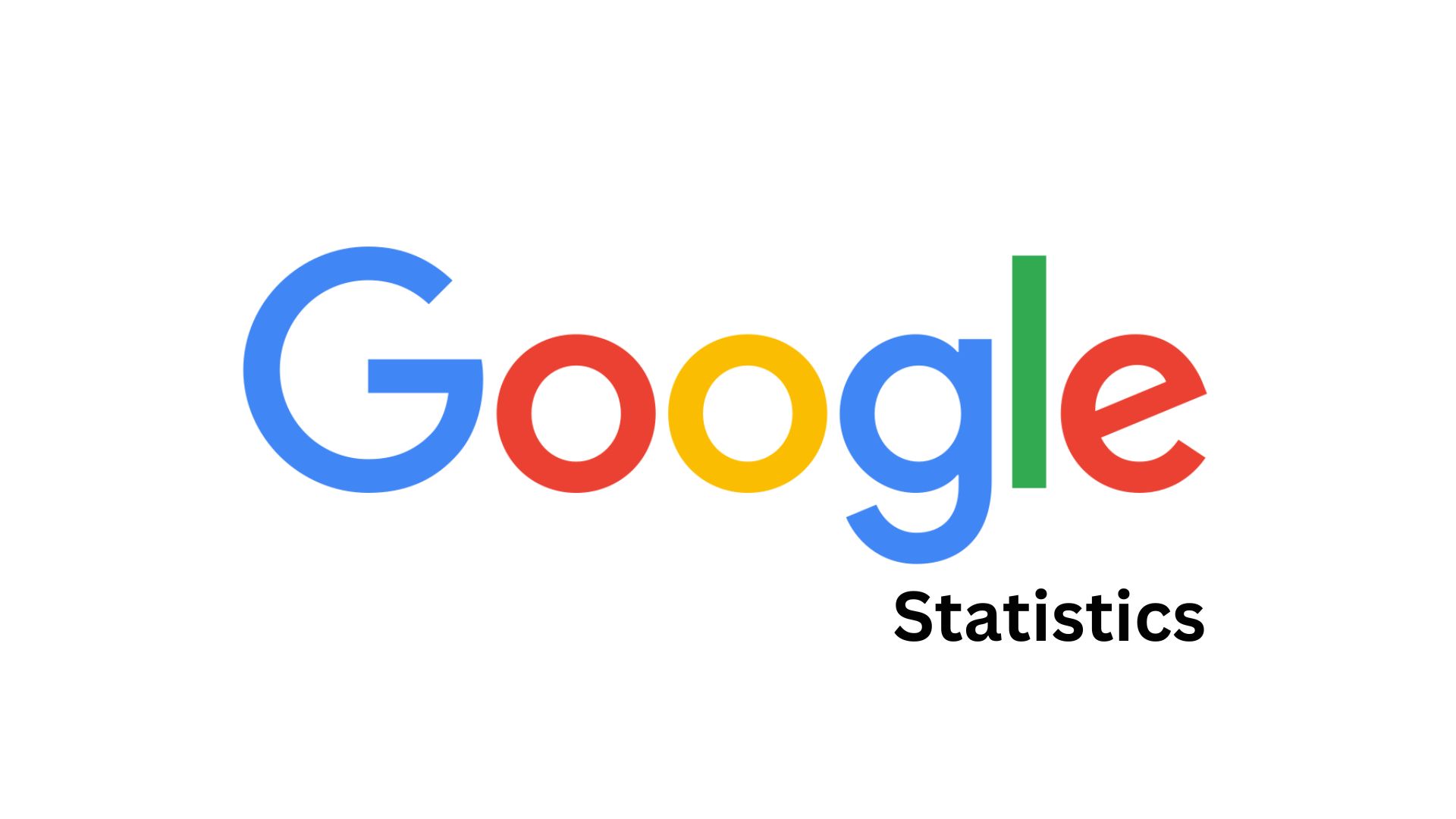NFC Payment Statistics By Market Size, Revenue, Users And Facts (2025)
Updated · Nov 24, 2025
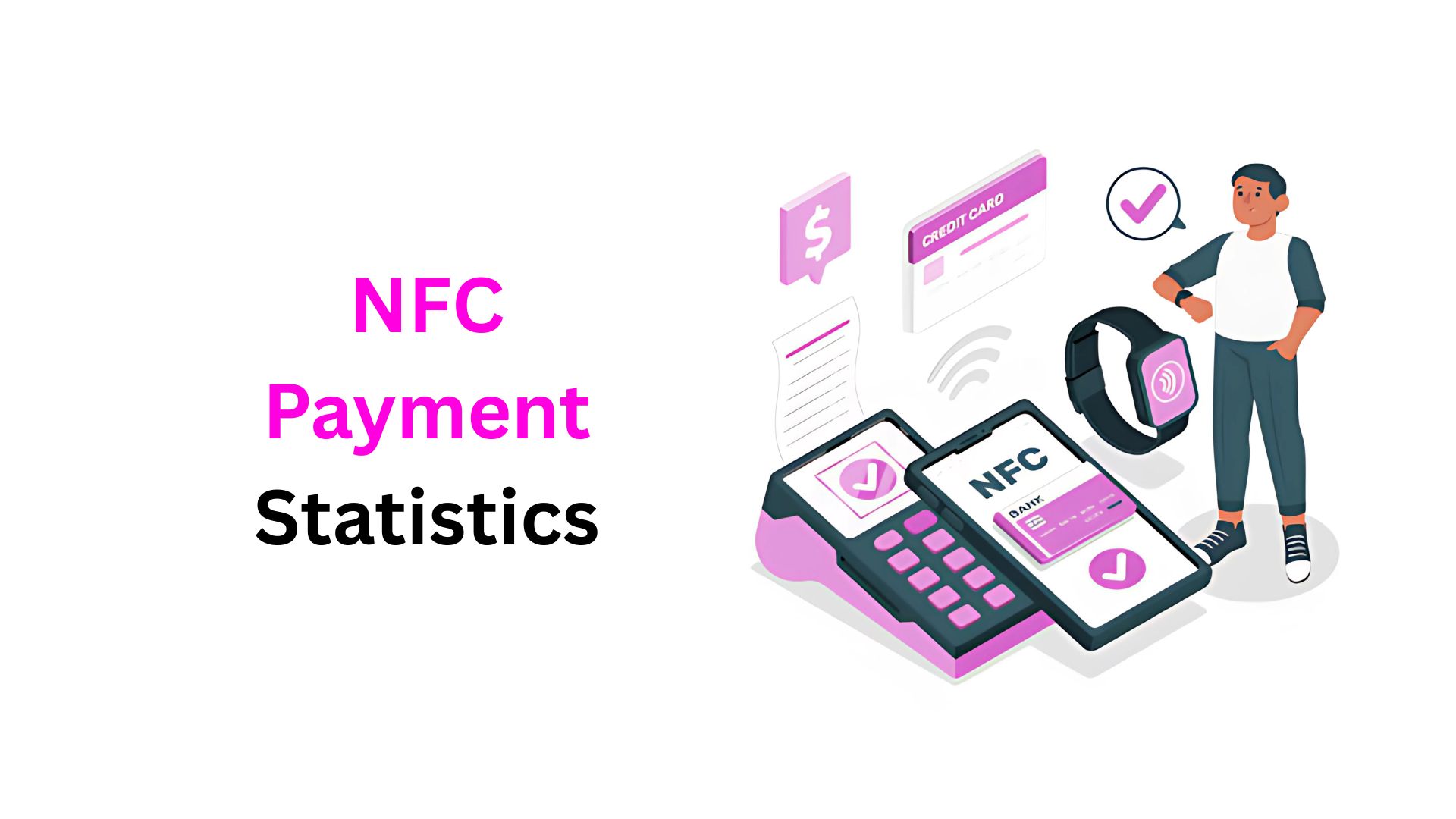
Table of Contents
- Introduction
- Editor’s Choice
- General NFC Payment Statistics
- NFC Payment Device Market Statistics
- NFC Payment Market Revenue Statistics
- By Components
- NFC Payment User Statistics
- By Demographics
- Regional Analysis of NFC Payment Statistics
- NFC Payment Market Statistics by Country
- The Growth of POS Payments Technology Statistics
- Advantages of NFC Payments
- Conclusion
Introduction
NFC Payment Statistics: NFC, or near-field communication, lets two electronic devices connect when they are very close, usually within 4 cm. It uses simple, low-speed signals and works through tiny coils, commonly found in smartphones and other contactless devices.
The technology allows quick, secure, and touch-free payments by simply tapping a device or card on a reader. In the past few years, more people have started using NFC payments in shops, restaurants, buses, trains, and even hospitals. Both customers and businesses prefer this method because it is quick and safe. As smartphones become more common and more payment machines support contactless options, trust in digital wallets is also increasing. Together, these changes are transforming the way people make the payment process easier around the world.
Editor’s Choice
- Market.us Scoop reports analysis shows that the NFC payments market is estimated to reach around USD 35.40 billion by 2025
- The NFC payment device is expected to rise from about USD 36.5 billion in 2024 to nearly USD 216.8 billion by 2034.
- A recent report from Juniper Research highlights the use of contactless payments, in which the total value of these transactions is expected to more than double, rising from USD 7.7 trillion in 2025 to about USD 18.1 trillion by 2030.
- In 2024, the contactless payments sector earned strong revenue from different parts of the business, in which hardware captured the highest share at USD 14.7 billion.
- By the end of 2024, the number of people using mobile wallets worldwide is expected to reach around 5.0 to 5.2 billion, according to CoinLaw.
- Worldwide, about 53% of people using NFC are women, mainly for shopping and daily needs, while men account for the other 47% of users.
- A cognitivemarketresearch.com report stated that the North American NFC market is expected to increase to nearly USD 8,592.25 million by 2025, before reaching about USD 20,898.20 million in 2033.
- In the United States, the NFC payment market is projected to reach around USD 6,801.63 million in 2025.
- By 2024, nearly 88% of POS makers are expected to include NFC support as a standard feature.
General NFC Payment Statistics
- A recent report from Juniper Research highlights the use of contactless payments, in which the total value of these transactions is expected to more than double, rising from USD 7.7 trillion in 2025 to about USD 18.1 trillion by 2030.
- This payment method is predicted to expand rapidly, with transactions climbing nearly 300% within five years.
- In numbers, NFC ticketing is set to move from 11.2 billion transactions in 2025 to around 44.8 billion by 2030.
- According to coinlaw.io, the use of contactless payments, including NFC, grew by nearly half between 2020 and 2023.
- In 2024, the worldwide value of such transactions is projected to reach USD 6.25 trillion, marking a one-fourth jump from the previous year.
- In the United States, more than three-quarters of consumers say they now favor tap-to-pay methods instead of swiping their cards.
- After the pandemic, many small companies adjusted to customer demand, with about 44% introducing NFC-enabled systems.
- The Asia-Pacific market remains at the forefront, generating around 40% of all global NFC transactions.
- In Europe, nearly 85% of retail purchases are already contactless, and the share is expected to touch 90% by 2025.
- Meanwhile, the Middle East recorded a usage share of 38% year-on-year in 2023.
NFC Payment Device Market Statistics
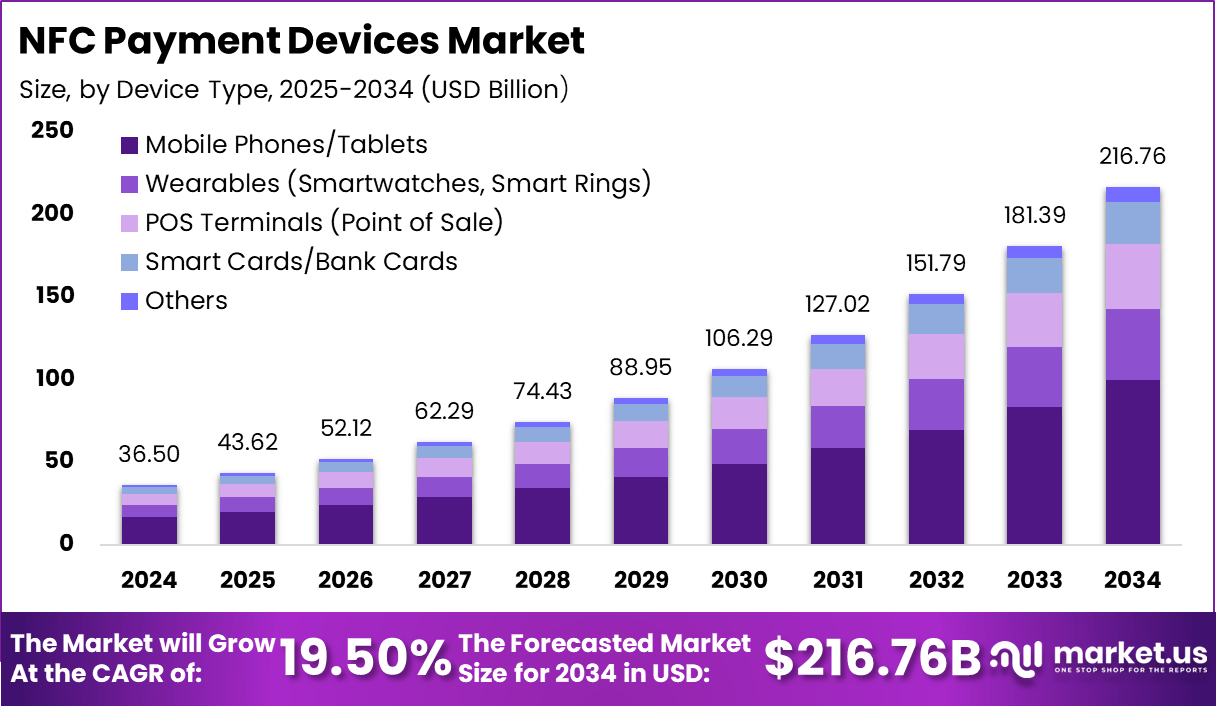
- The Global NFC Payment Devices Market is projected to reach USD 216.76 billion by 2034, rising from USD 36.5 billion in 2024, with a strong annual growth rate of 19.50% between 2025 and 2034.
- In 2024, Asia-Pacific led the market with over 38% share, generating USD 13.87 billion in revenue. Within this region, China dominated with USD 5.8 billion and is expected to maintain steady growth at a 17.3% CAGR.
- Mobile phones and tablets represent the dominant device type, holding 46% of the market share.
- Retail and e-commerce remain the leading application areas, accounting for 40% of demand for NFC payment devices.
- Asia-Pacific continues to lead in global adoption, contributing 38% of the total market share.
- China alone contributes significantly, with USD 5.8 billion in NFC payment transactions, growing at 17.3% CAGR.
- Market growth is being driven by high smartphone penetration, an increasing preference for contactless transactions, and advances in security technologies.
User Base and Adoption
- Around 94% of all smartphones worldwide are equipped with NFC technology.
- By 2026, 81% of all payment cards are expected to be contactless.
- 1.3 billion people worldwide currently use NFC payments.
- The number of mobile payment users is forecasted to reach 1.7 billion by 2027.
Usage Statistics
- In 2020, North America recorded 3.7 billion contactless card transactions, worth USD 110 billion.
- In the USA, NFC mobile payments are expected to reach 3 billion by 2027, compared to 4.4 billion in 2022.
- The average transaction value for NFC payments is about USD 15.
Quantity and Production
- Each year, more than 1.5 billion NFC-enabled devices are manufactured.
- Around 1.4 billion smartphones are produced annually, with most supporting NFC technology.
Device Types
- Smartphones dominate the NFC payments market, accounting for about 80% of all NFC transactions in 2022.
- Smartwatches and fitness trackers are also gaining traction, with over 100 million units sold every year as part of the wearable payments segment.
NFC Payment Market Revenue Statistics
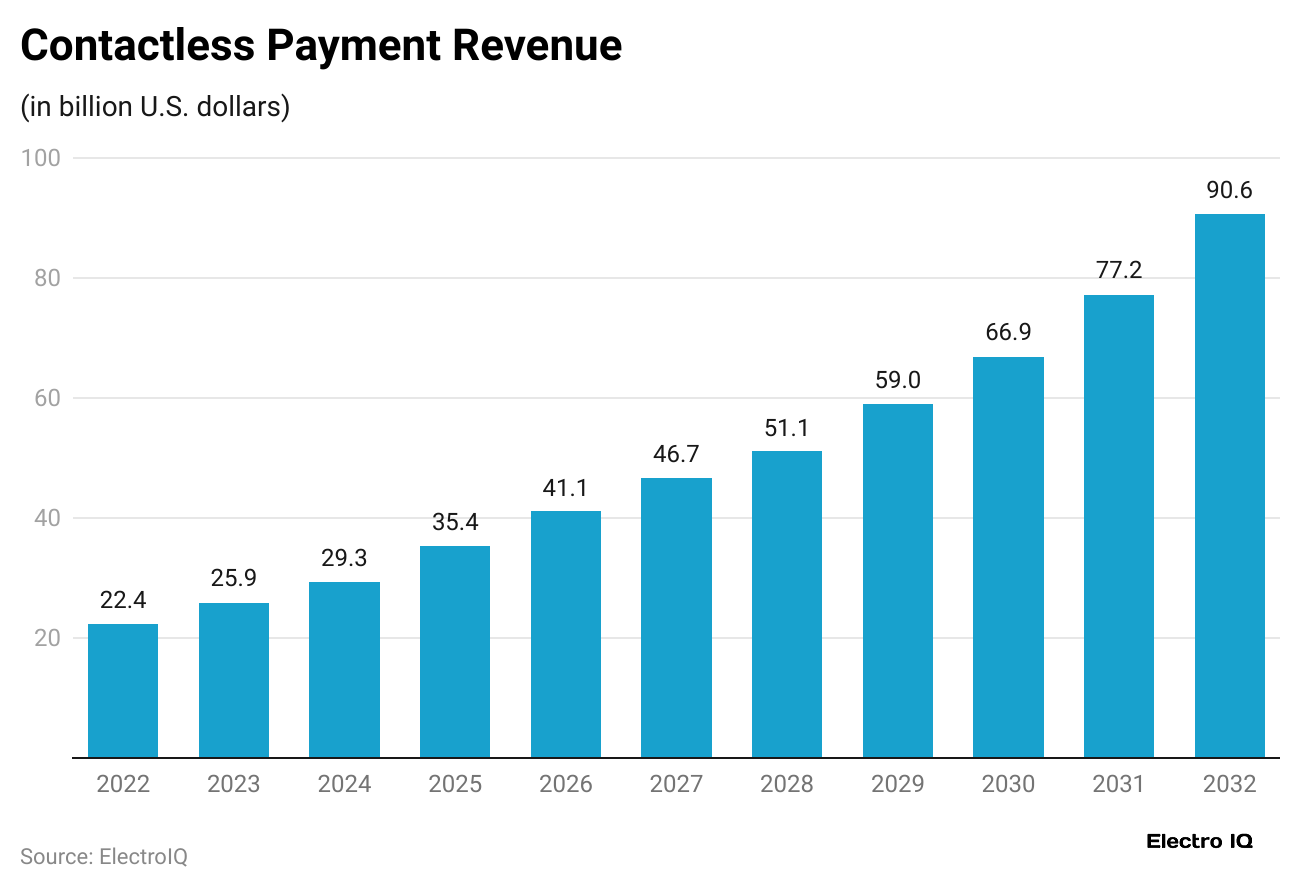
- In 2023, NFC payments generated about USD 25.90 billion in revenue.
- The market size has already accounted for USD 29.30 billion in 2024 and will grow further to USD 35.40 billion by the end of
- This upward trend is set to continue, with revenues projected at USD 41.1 billion in 2026, USD 46.7 billion in 2027, and USD 51.1 billion in 2028, followed by USD 59.0 billion in 2029, USD 66.9 billion in 2030, USD 77.2 billion in 2031, and reaching an impressive USD 90.6 billion by 2032.
- The contactless payment industry has been growing rapidly, with an average annual growth rate of 15.4%.
By Components
- In 2024, the contactless payments sector earned strong revenue from different parts of the business, in which hardware captured the highest share at USD 14.7 billion.
- Meanwhile, solutions added USD 8.3 billion, and services contributed another USD 6.3 billion.
- The market is expected to grow in 2025, with hardware revenue rising to USD 17.5 billion, solutions increasing to USD 10 billion, and services reaching USD 7.6 billion.
| Year | Hardware | Solution | Services |
| Revenue (USD billion) | |||
|
2026 |
20.6 | 11.7 | 8.9 |
| 2027 | 23.3 | 13.3 |
10.1 |
|
2028 |
25.5 | 14.5 | 11 |
| 2029 | 29.5 | 16.7 |
12.7 |
|
2030 |
33.4 | 19 | 14.4 |
| 2031 | 38.6 | 21.9 |
16.7 |
|
2032 |
45.3 | 25.7 |
19.6 |
NFC Payment User Statistics
- By the end of 2024, the number of people using mobile wallets worldwide is expected to reach around 5.0 to 5.2 billion, according to CoinLaw.
- NFC support has become almost universal, with over 94% of smartphones equipped for contactless use and billions of active devices in circulation.
- Studies also suggest that phones and tablets account for nearly 46% of all NFC-enabled payment devices.
- Contactless card adoption is also rising, with forecasts showing that more than 80% of cards will support tap-to-pay by 2026.
- Currently, about 1.3 billion people use NFC payments, while mobile payment users overall could grow to 1.7 billion by 2027.
- Retail and e-commerce together represent the largest share of spending, contributing close to 40%.
By Demographics
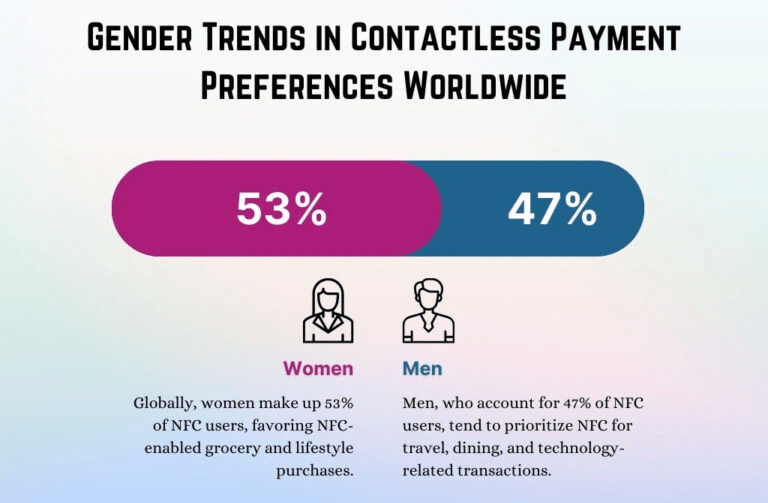
- Worldwide, about 53% of people using NFC are women, mainly for shopping and daily needs, while men account for the other 47% of users.
- More than 70% of people using NFC payments today are Millennials and Gen Z, mainly because they value speed and ease of use.
- In the United States, about 80% of those aged 25 to 34 pay with NFC regularly when shopping in stores.
Regional Analysis of NFC Payment Statistics
- A cognitivemarketresearch.com report stated that the North American NFC market was valued at around USD 5,510.03 million in 2021 and is expected to increase to nearly USD 8,592.25 million by 2025, before reaching about USD 20,898.20 million in 2033.
- This growth reflects a steady CAGR of 11.75% between 2021 and 2033.
- By 2025, North America is projected to make up 27.8% of the global NFC market.
- In contrast, the United States leads strongly, representing 22.0% of the worldwide share, mainly due to the widespread use of Apple Pay and Google Pay.
- Canada contributes 3.5%, while Mexico adds 2.3% to the global total.
Furthermore, other regional analyses are mentioned below:
| Region | 2025 | 2033 | CAGR (2021 to 2033) |
| Market Size (USD million) | |||
| Europe | 7,743.83 | 19,169.80 | 12% |
| Asia Pacific | 10,412.50 | 27,969 | 13.15% |
| South America | 1,968.35 | 5,123.98 | 12.70% |
| Middle East | 1,186.26 | 3,077.38 | 12.66% |
| Africa | 948.70 | 2,326.30 | 11.87% |
NFC Payment Market Statistics by Country
- In the United States, the NFC payment market is projected to reach around USD 6,801.63 million in 2025 and is expected to grow further to approximately USD 16,390.40 million by 2033.
- This expansion represents a compound annual growth rate (CAGR) of 11.62% from 2021 to 2033.
Other countries’ NFC payment market valuations are stated below:
| Country | 2025 | 2033 | CAGR (2021 to 2033) |
| Market Size (USD million) | |||
| Canada | 1073.17 | 2739.75 | 12.429% |
| Mexico | 717.453 | 1767.99 | 11.934% |
| United Kingdom | 1223.53 | 3099.75 | 12.322% |
| Germany | 1595.23 | 4159.84 | 12.728% |
| France | 1103.49 | 2626.26 | 11.448% |
| Italy | 741.859 | 1786.62 | 11.613% |
| Russia | 325.241 | 699.696 | 10.05% |
| Spain | 549.037 | 1395.56 | 12.368% |
| Sweden | 483.989 | 1214.41 | 12.187% |
| Denmark | 329.113 | 797.462 | 11.698% |
| Switzerland | 308.979 | 720.783 | 11.169% |
| Luxembourg | 120.417 | 280.645 | 11.156% |
| Rest of Europe | 962.945 | 2388.74 | 12.027% |
| China | 2853.03 | 7789.37 | 13.377% |
| Japan | 1723.48 | 4407.91 | 12.455% |
| India | 1723.27 | 4894.58 | 13.938% |
| South Korea | 956.91 | 2458.48 | 12.519% |
| Australia | 722.629 | 1815.19 | 12.202% |
| Singapore | 266.56 | 741.178 | 13.636% |
| South East Asia | 779.897 | 2189.97 | 13.776% |
| Taiwan | 355.067 | 916.264 | 12.581% |
| Brazil | 783.797 | 2020.9 | 12.569% |
| Argentina | 352.532 | 955.623 | 13.276% |
| Colombia | 284.899 | 712.439 | 12.139% |
| Peru | 136.761 | 349.866 | 12.459% |
| Chile | 150.973 | 401.208 | 12.995% |
| Rest of South America | 259.389 | 683.949 | 12.884% |
| Saudi Arabia | 323.729 | 845.047 | 12.742% |
| Turkey | 206.764 | 551.158 | 13.038% |
| UAE | 187.191 | 511.768 | 13.396% |
| Egypt | 167.381 | 419.139 | 12.158% |
| Qatar | 135.838 | 346.851 | 12.432% |
| Rest of the Middle East | 165.352 | 403.413 | 11.794% |
| Nigeria | 153.499 | 383.141 | 12.113% |
| South Africa | 411.355 | 1051.95 | 12.453% |
| Rest of Africa | 383.842 | 891.205 | 11.104% |
The Growth of POS Payments Technology Statistics
- In 2023, around 75% of point-of-sale (POS) systems across the world were able to support NFC payments, compared to 58% in 2020.
- Cloud-based POS systems with NFC grew by 32%, helping small businesses save money. Stores using NFC-enabled POS machines noticed transactions were 27% faster.
- AI-powered POS systems handled 21% of NFC payments while also helping businesses track inventory through predictive tools.
- Self-checkout machines with NFC support rose by 19% in just one year.
- In the hospitality industry, portable NFC payment machines grew by 22%.
- The use of embedded NFC in healthcare, like in smart insulin pens, is expected to increase by 40% by 2025.
- By 2024, nearly 88% of POS makers are expected to include NFC support as a standard feature.
Advantages of NFC Payments
- NFC makes paying simple with just a tap once, and the purchase is finished without hassle.
- It includes strong safety features that keep personal and financial details protected.
- Most stores and machines now accept NFC, making it easy to use almost anywhere.
- Shoppers enjoy the fast process, which helps businesses build better customer loyalty.
- Companies save money with lower charges and less need to manage physical cash.
- This payment option also supports the environment by cutting down on paper and plastic use.
Conclusion
NFC payments have quickly moved from being a convenient option to becoming a standard way of paying across the world. Their speed, security, and ease of use make them attractive for both consumers and businesses. With more smartphones supporting NFC and contactless payment systems expanding into different industries, usage is expected to rise even further.
As digital habits grow stronger, NFC technology will remain an important part of the future of everyday transactions.
FAQ.
No, only smartphones with built-in NFC technology and compatible wallet apps can support contactless payments.
The NFC payments can be used within stores, restaurants, transport, healthcare, vending machines, and parking meters.
They usually don’t need internet; mostly work offline, but wallets sometimes need updates.
Yes, NFC payment is safe because it uses encryption, tokenisation, and biometric authentication for protection.
Popular NFC payment wallets include Google Pay, Apple Pay, Samsung Pay, plus many bank mobile apps.

Maitrayee Dey has a background in Electrical Engineering and has worked in various technical roles before transitioning to writing. Specializing in technology and Artificial Intelligence, she has served as an Academic Research Analyst and Freelance Writer, particularly focusing on education and healthcare in Australia. Maitrayee's lifelong passions for writing and painting led her to pursue a full-time writing career. She is also the creator of a cooking YouTube channel, where she shares her culinary adventures. At Smartphone Thoughts, Maitrayee brings her expertise in technology to provide in-depth smartphone reviews and app-related statistics, making complex topics easy to understand for all readers.





